

This double-sided banner shows two matrika, mother goddesses that represent the female counterparts of the great Hindu gods and the embodiments of those gods’ energies[...]
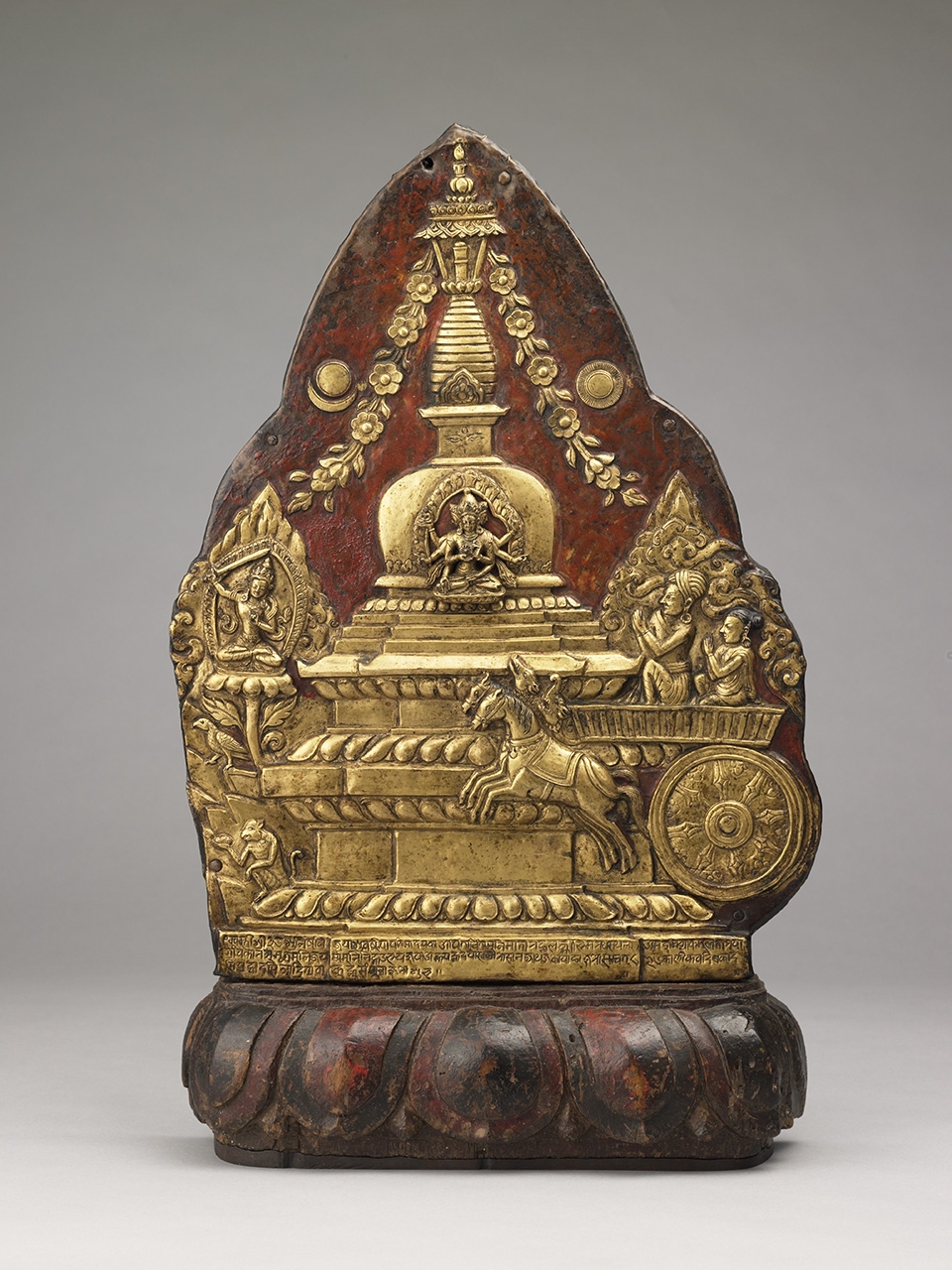
This exquisitely crafted gilded répoussé plaque depicts a special birthday celebration common to the Kathmandu Valley known as the Chariot Ritual [...]

This monumental work, one of the largest Nepalese scroll paintings (paubha) in the world, depicts the temple of Rato Macchendranath in the ancient kingdom of Patan in the Kathmandu Valley [...]

This six-armed form of Mahakala in this dynamic pose is one of the principal protectors of the Geluk School of Tibetan Buddhism, to which most Mongolians have adhered since the late sixteenth century [...]
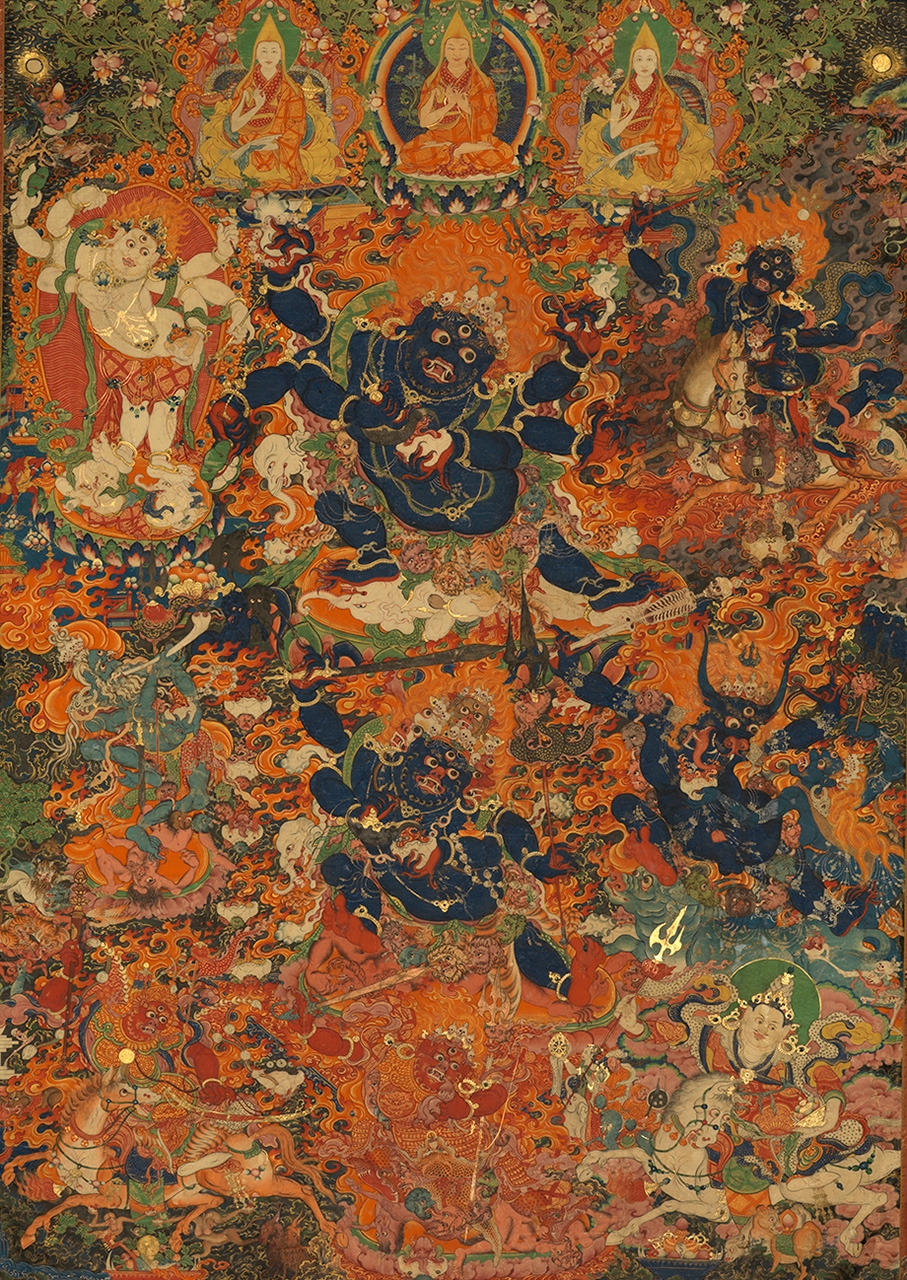
This vibrant scroll painting (thangka), teeming with deities and their jeweled and flaming halos, is dedicated to nine wrathful deities particularly important to the Geluk School of Tibetan Buddhism, with Six-armed Mahakala largest and primary among them [...]
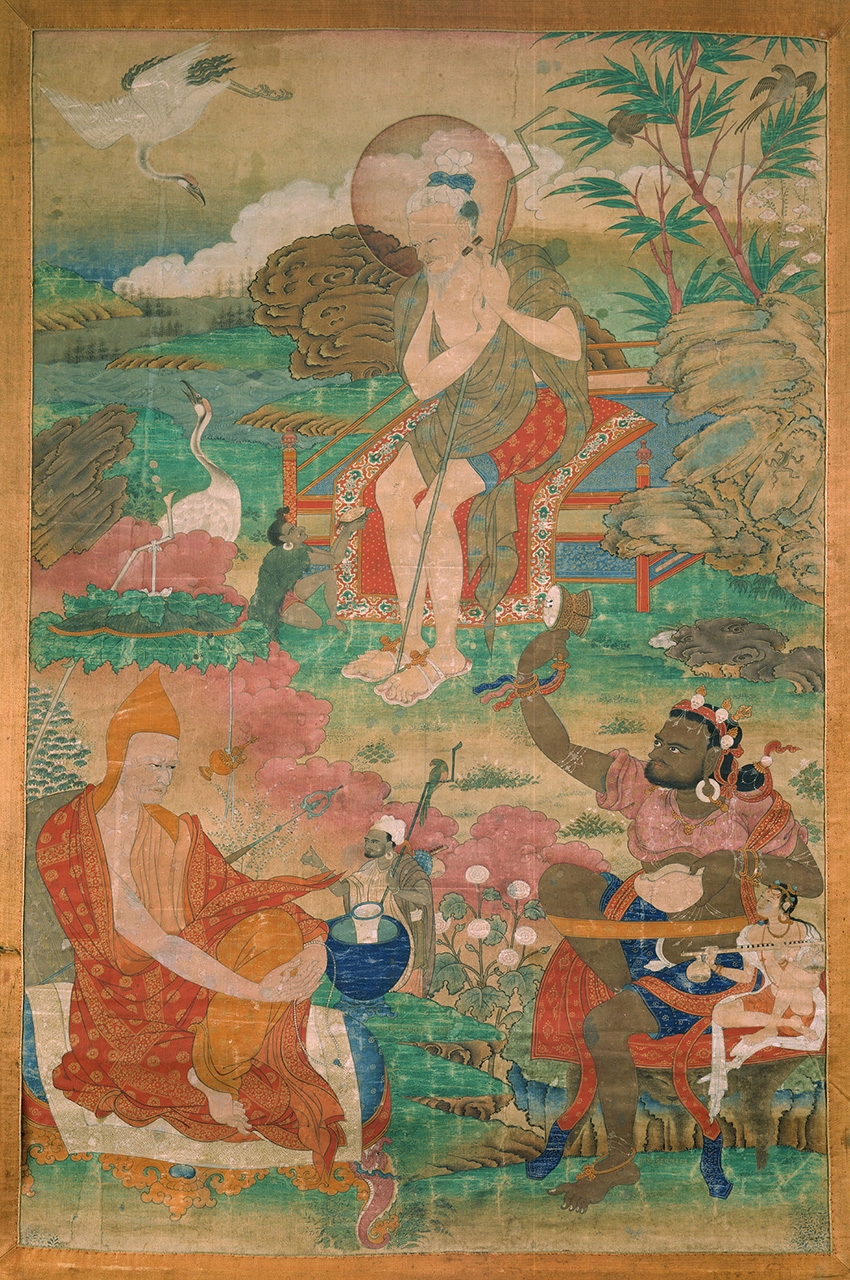
This painting is from a large set depicting the eighty-four great Tantric adepts (mahasiddha) and portrays three of them, including both monastic and lay yogis [...]
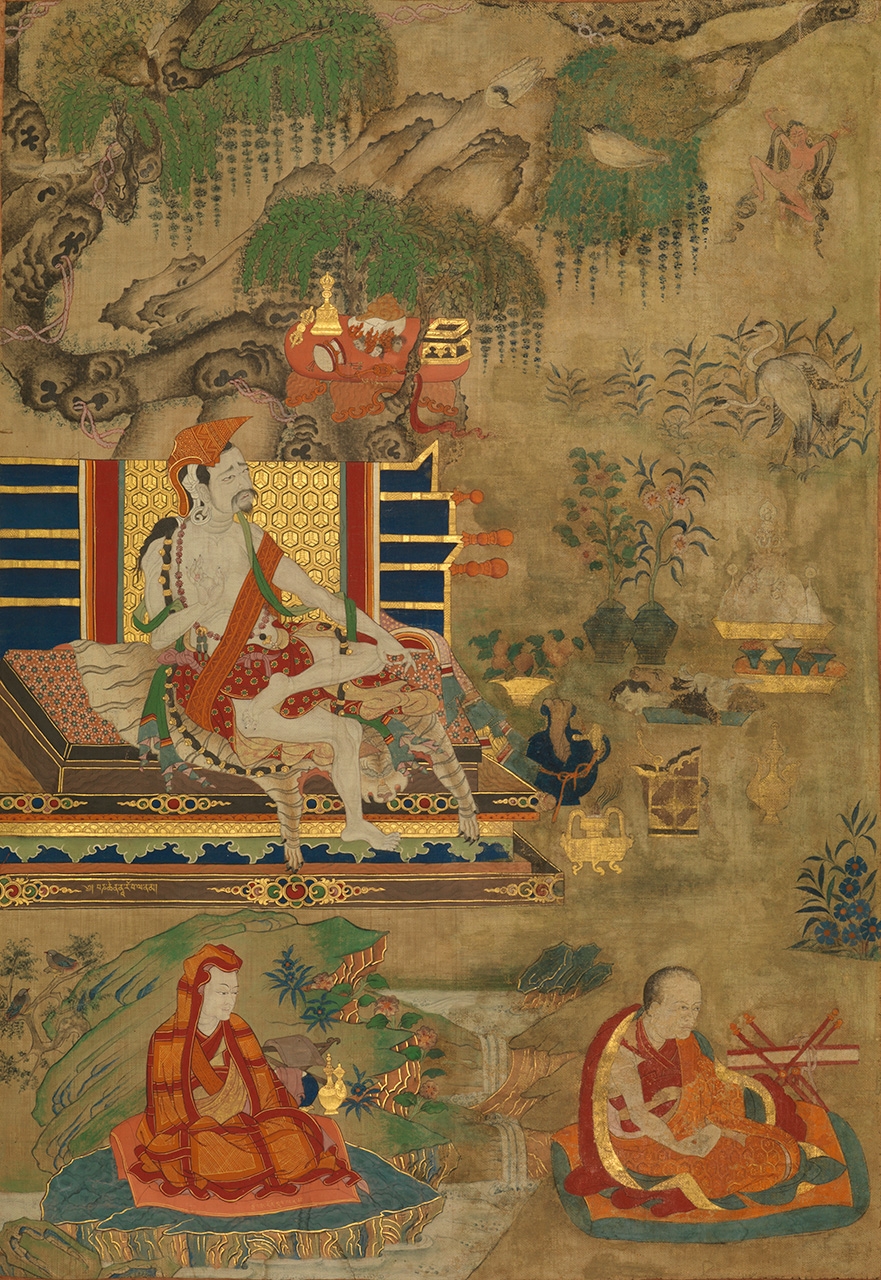
In this painting the great Tantric adept (mahasiddha) Naropa sits gazing up at a red dakini flying in a dynamic pose in the upper-right corner [...]
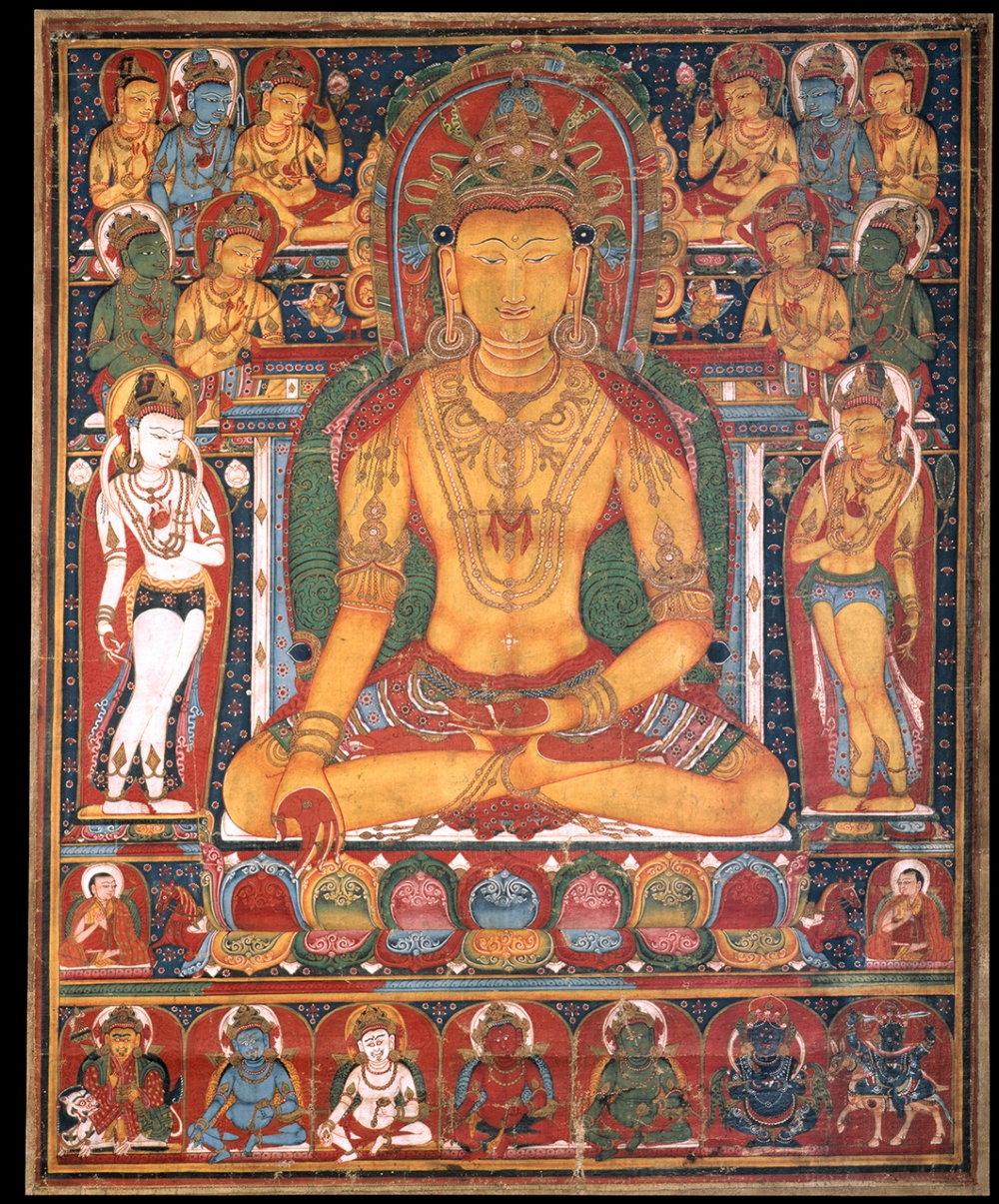
Ratnasambhava, the buddha that presides over the southern direction, is one of the Buddhas of the Five Families, each associated with a cardinal direction [...]

This sculpture of the historical Buddha shows him with characteristic lotus wheel marks on his hands and feet, wearing monastic dress, and performing the gesture of touching the earth, a reference to his enlightenment […]
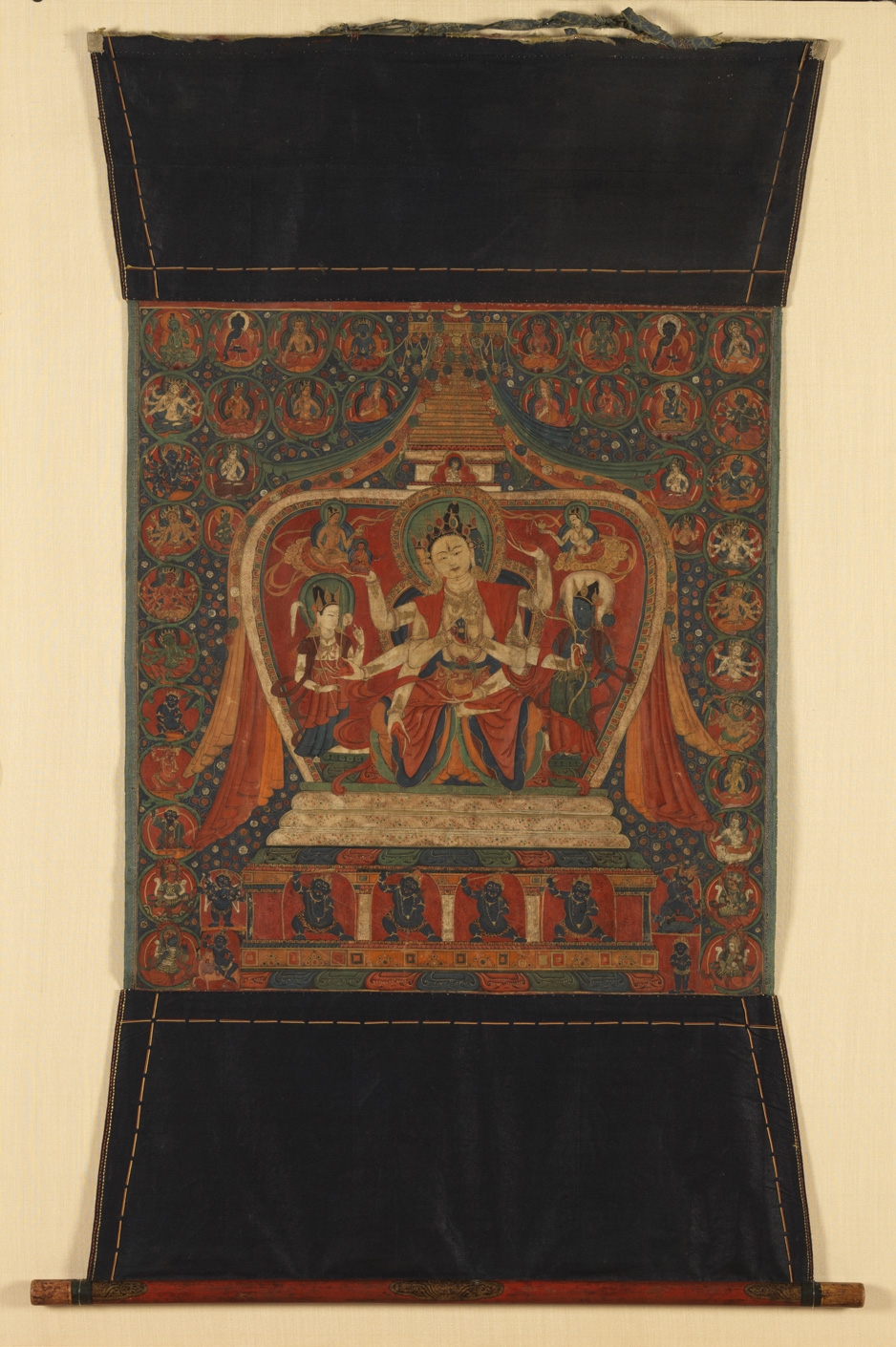
The eight-armed goddess Ushnishavijaya resides at the center of this painting inside a richly ornamented stupa. She is one of the three Buddhist deities of long life, along with White Tara and Amitayus. She became popular in Tibet and the Himalayas in the fourteenth century, where she can be found depicted in portable paintings (thangkas), temple murals, and three-dimensional stupas.
In this painting Ushnishavijaya is flanked by the bodhisattvas Avalokiteshvara (white) and Vajrapani (blue) as well as two small celestial deities floating on clouds and bathing her in nectar. A small image of Vairochana, the Buddha from which Ushnishavijaya emanates, sits directly above her within a trefoil-arched niche. Four blue protectors stand in the arched base of the stupa, while numerous deities ensconced in scrolling lotus vine roundels are neatly arranged around the stupa.
This painting is among the most beautiful depictions of Ushnishavijaya in the architectural frame of a stupa. The lavish decorative elements offer strong visual appeal—the dense coloration, flowing textiles and floral garlands, sumptuous jewelry, and small blossoms that fill the background. This painting is also important because it reflects the intersection of Tibetan and Nepalese painting styles during the fifteenth century.
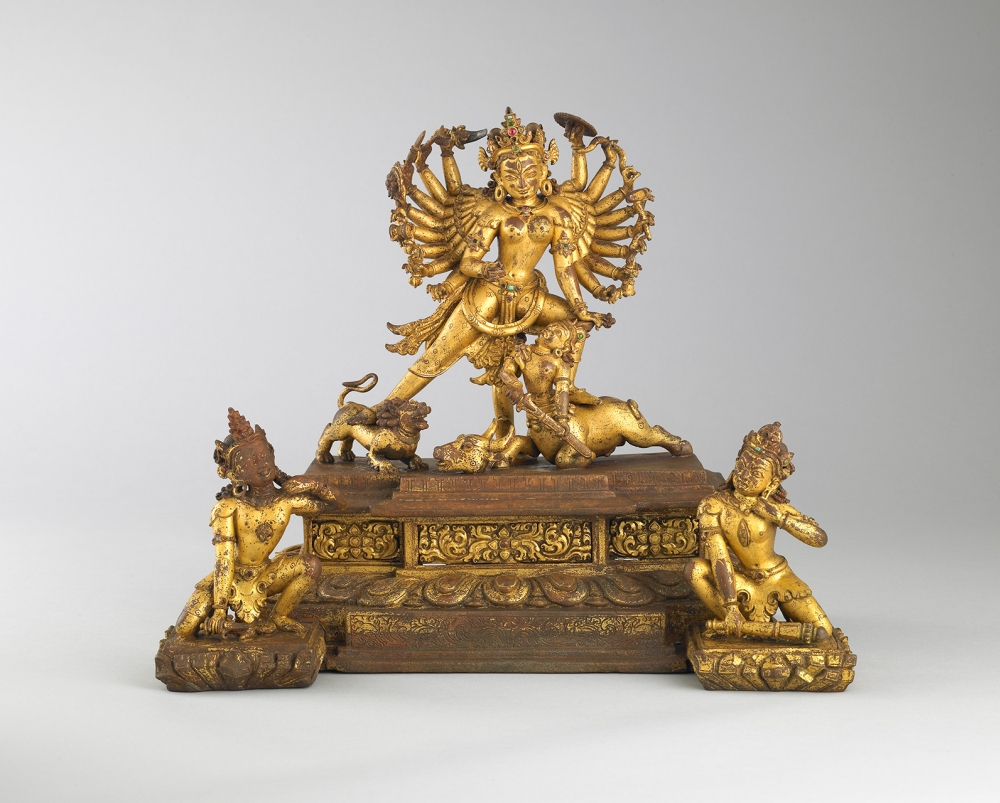
This sculpture of the Hindu goddess Durga defeating a buffalo demon is one of the finest examples of Nepalese craftsmanship in the Rubin Museum’s collection. Standing just less than eleven inches high, this sculpture is a visitor and staff favorite. It captures a moment in the legendary story of the goddess. Bent on upsetting the order of the world, the buffalo demon Mahisha declared, “I will be defeated by no man by day or by night!” But what about a woman defeating him at dusk? Durga took on the role of heroine, and with the weapons of her fellow gods, she defeated Mahisha.
This form of Durga has eighteen arms, each holding a ritual implement. Her arms recede from large and long in the front to smaller and shorter as they go backward, creating a feeling of dynamic motion and perspective. Depicted in a warrior stance, Durga’s right leg is supported by a snow lion while her left leg pins down the buffalo demon. The demon is in the process of shape-shifting from his buffalo form into a humanlike form. To add to the dynamism of the object, two of the demon’s minions, with weapons piercing their chests, form a perfect triangle with Durga. The triangle is a common form in this type of art and serves to draw the eye straight up to Durga’s calm, delicate face.
— David Rosenberg, Gallery Guide Program Coordinator
__large-original-ratio.jpg)
This 16th century Tibetan sculpture represents Kanha “the dark-skinned one” who was one of the semi-mythical Indian tantric masters known as the Mahasiddhas (Maha means “great” and siddha means “adept”). Kanha is remembered as a great poet and singer and his life story exemplifies the highs and lows of the Mahsiddhas’ tantric path, an often shocking alternative to the paths of Buddhist monasticism and standard lay practice. Although Kanha was a very successful meditator who experiences numerous mystic visions, he struggled with pride in his tantric achievements and became overwhelmed by anger when he was challenged. Despite ultimately being associated with the failure to bring what he learned through meditation into his daily life, Kanha’s story is widely known and enjoyed in tantric cultures such as Tibet. He is an important link in the Lamdre lineage of the Tibetan Buddhist Sakya tradition.
— Dominique Townsend, Head of Interpretation and Innovation
